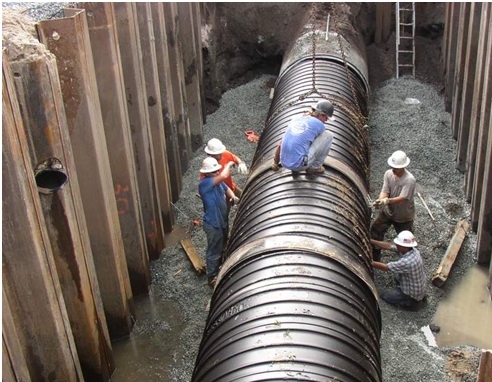In areas of the country that routinely experience frigid winters, home builders take precautions to prevent pipes from freezing. Lately, though, the frequency of winter freezes seems to be on the rise even in places with otherwise mild winters. Winter freezes aren’t just unpleasant. They can also cause substantial damage to buildings if their pipes are left unprotected.
Protecting residential and commercial water lines is a relatively simple process. Pipes located next to exterior walls or in unheated interior areas can be wrapped with insulation, and the heat can be turned up to compensate for below-freezing temperatures outdoors. Protecting pipelines, on the other hand, can be quite an ordeal.
Why Pipelines Freeze
Just like water pipes, pipelines, whether they’re designed to carry potable water or natural gas, can freeze in the winter if they are not adequately protected. It’s common practice for pipelines to be buried beneath the frost line in areas of the country that see regular freezes, but the same is not always true for the infrastructure used in the southernmost states. The good news is that the same products used for repairing pipelines can be used in preventative maintenance.
Why Frozen Pipelines Matter
The extreme weather events of 2021 brought problems associated with pipeline freezing to the forefront of many Americans’ minds. Texas is an excellent example. The areas hit with record cold and snow were, unsurprisingly, unprepared to weather the storm, which left much of the area’s infrastructure above ground and unprotected.
When the natural gas pipelines in Texas began to freeze, it exacerbated an already escalating problem. Residents were already facing much higher energy prices as the power demand spiked. As the natural gas pipelines began to freeze, processing plants shut down and left many residents without heat. The results were disastrous and sometimes deadly.
Damaged Pipelines Compound the Problem
The example of last year’s winter in Texas is an extreme one, so some may be wondering if it’s really relevant. Given that temperature fluctuations are only getting more extreme, it’s clear that something must be done. To make matters even worse, even minor damage to pipelines can significantly increase the risk of serious equipment failures in the winter.
Winter freezes are just one of many causes of pipeline damage. If a pipeline already has minor leaks, corrosion, or weld damage, the chances of more significant failures arising when the temperatures plummet become more significant.
Understanding Potential Consequences
Pipeline operators know how devastating a serious failure can be at any time of the year, but the general public gives little thought to the potential consequences of pipeline failures. The problem isn’t just that natural gas leaks can damage the ecosystem and cause sudden spikes in prices. Some pipelines also carry hazardous liquids, and when these pipelines fail, the damage to local ecosystems can be catastrophic.
Pipeline Operators Should Take Action Now
Pipeline operators can’t afford to wait until the temperatures start to plummet to take action. Performing preventative maintenance on pipelines now, while the temperatures are still warm, will help to prevent serious damage during the winter when natural gas supplies are needed the most. Pipeline operators should only use repair sleeves that have undergone substantial testing that provides the data to back up manufacturers’ claims.
It’s not worth risking serious damage. Remember that damage to local ecosystems and communities will also cause reputational damage to the pipeline company. Start taking preventative actions as soon as possible.

